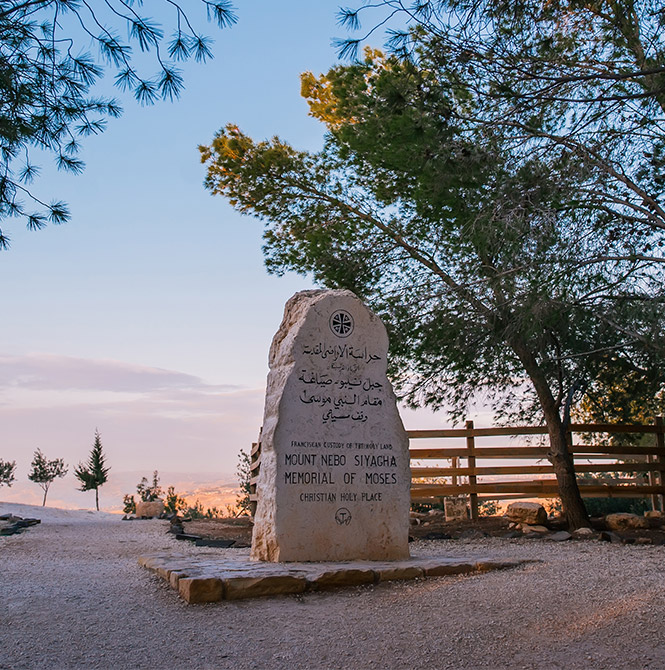
Mount Nebo is the site where the Prophet Moses saw the Holy Land without entering it: “Then Moses ascended from the wilderness of Moab, to Mount Nebo, to the top of Pisgah, toward Jericho. And the Lord showed him the whole land... And he said to him: "This is the land that I swore to Abraham, Isaac, and Jacob, by saying: Give it to your descendants. I have shown you it with your eyes, but you shall not cross over there." So, Moses, the servant of the Lord, died there in the land of Moab, by the command of the Lord. And he buried him in the valley in the land of Moab, toward Beth Peor. No one knows his grave to this day” (Deuteronomy 34:1-6). However, our ancestors honored the Prophet Moses, with evidence of the antiquities existing so far, which date back to the fourth century AD.

Mount Nepo is located west of Madaba City, and oversees the mouth of the Jordan River and the city of Jericho. The Bible mentions Mount Nebo, to which Moses the Prophet ascended from Moab desert to the top of Pisgah when God saw to him all the land promised by the Lord and informed him that He would not cross into it, and died there in a Moab land and buried in the valley.
Our ancestors honored Moses the Prophet with evidence of the monuments that have so far existed, as the Spain Pilgrim stated when during her visit visited to the Holy Lands in 394 AD, that Memorial of Moses the Prophet on Mount Nepo and a small temple on top of the mountain was erected in memory of him, and the whole area belonged to the Archdiocese of Madaba.
Bishop Peter al-Aberi, Bishop of Georgia, wrote in his pilgrimage notes at the end of the fifth century that there was a large temple built by the inhabitants of the region in honor of the Prophet Moses.
The shrine, the church, and the monasteries involved in political and military incidents and earthquakes like what the country involved in. An earthquake in 551 destroyed the church and it was rebuilt in 597, but it was destroyed again by two earthquakes in 1016 and 1033. A tourist in 1217 mentioned that a small number of Christians were residing on Mount Nebo when he passed by. In 1564 a Franciscan monk visited it and found it nothing but an abandoned ruin. In 1932 Mount Nebo became the property of the Custody of the Holy Land (the Franciscan Fathers).
After excavation, research and study, archaeologists were able to remove the cover on the history of this sacred place. In the 4th century AD, it was made up of 3 existing basement buildings where the altar now exists. It included a number of mosaic-ornate graves, on both sides of which were churches for burial prayers, and a large cross adorned the floor of the southern part. This work was carried out by artists Suhail and Iqam Walias in 531 AD. The three-dish church was built under Sergius the Bishop of Madaba in 597 and added a small church for the Virgin Mary of God in 608.